On July 13, 1998 I visited the Independence Mine Historical Park as the clouds lifted and the sun shone and I got some nice pictures of the pretty alpine scenery and the buildings at the Mine.
This was a gold mine that operated about 1936 through 1951 except for a few years during World War II. At the time of my visit the state was in the process of rehabilitating the buildings to make them open to the public but it was still an interesting area.

Independence Mine Historical Park, Alaska - 1998
GOLD! A magic word that time cannot tarnish; a soft metal with the strength to forge history. Gold was the magnet that drew thousands of adventurers to the last frontier. Though most Alaskans recognize that gold played an important part in Alaska's history, they normally think first of Nome, Fairbanks, or the Iditarod country.
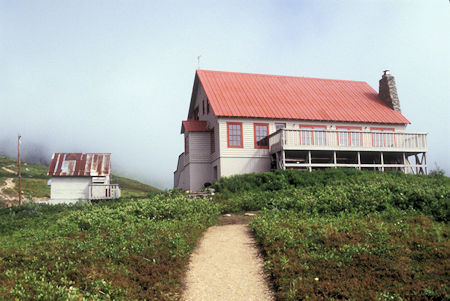
Mine Manager's House/Visitor Center, Independence Mine Historical Park, Alaska
But even before a quarter-of-a-million gold seekers began their stampede into those famous areas, gold was discovered just southeast of Anchorage in 1886. From there prospectors spread into the Susitna and Matanuska river basins, testing the creeks in the nearby mountains.
They found hard rock (lode) gold scattered in quartz veins throughout the granite in the Talkeetna Mountains. These veins were created by hydrothermal action that filled fractures in the rock. Erosion loosened flakes of gold, and flowing water eventually washed the gold-bearing gravel into a stream.
Throughout the history of gold mining, placer mining has preceded lode mining, and this area was no exception. The rough-textured gold found in the bottom of pans and sluice boxes hinted at something more: a nearby source, or mother lode.
Robert Lee Hatcher discovered and staked the first lode gold claim in the Willow Creek Valley in September 1906, and others soon followed. But lode mining was expensive for an individual operator; it required elaborate tunnels and heavy equipment, so companies merged to pool resources and reduce expenses.
What is now called Independence Mine was once two mines: The Alaska Free Gold (Martin) Mine on Skyscraper Mountain, and Independence Mine on Granite Mountain. In 1938 the two were brought together under one company, the Alaska-Pacific Consolidated Mining Company (APC).
With a block of 83 mining claims, APC became the largest producer in the Willow Creek Mining District. The claims covered more than 1,350 acres and included 27 structures. In its peak year, 1941, APC employed 204 men, blasted nearly a dozen miles of tunnels, and produced 34,416 ounces of gold worth $1,204,560; today $17,208,000.
Twenty-two families lived in nearby Boomtown, with eight children attending the Territorial School in the new bunkhouse.
By 1942, the United States had entered World War II, and the War Production Board designated gold mining as nonessential to the war effort. Gold mining throughout the United States came to a halt, but Independence Mine continued to operate because of the presence of sheelite.
Sheelite occurs in some of the quartz veins along with gold, and was a source of tungsten, a strategic metal. But because Independence Mine's scheelite production was low, the exemption was short-lived. In 1943, Independence Mine was ordered to close.
The wartime ban was lifted in 1946, but gold mining was slow to recover. After the war, gold could be sold only to the U.S. government at a fixed rate of $35 per ounce.
Postwar inflation raged, and gold mining became an unprofitable venture. Finally, in January of 1951, after mining nearly 6 million dollars' worth of gold, Independence Mine was closed by APC, and a chapter of Alaska's gold mining history came to an end.
In 1974, Independence Mine was entered into the National Register of Historic Places, a list of cultural resources significant to American history. In the late 1970's, 271 acres of land were donated to the Alaska Division of Parks & Outdoor Recreation for establishment of Independence Mine State Historical Park. On January 16, 1980, title to the acreage was transferred to the State of Alaska.

Independence Mine Historical Park, Alaska - 2016
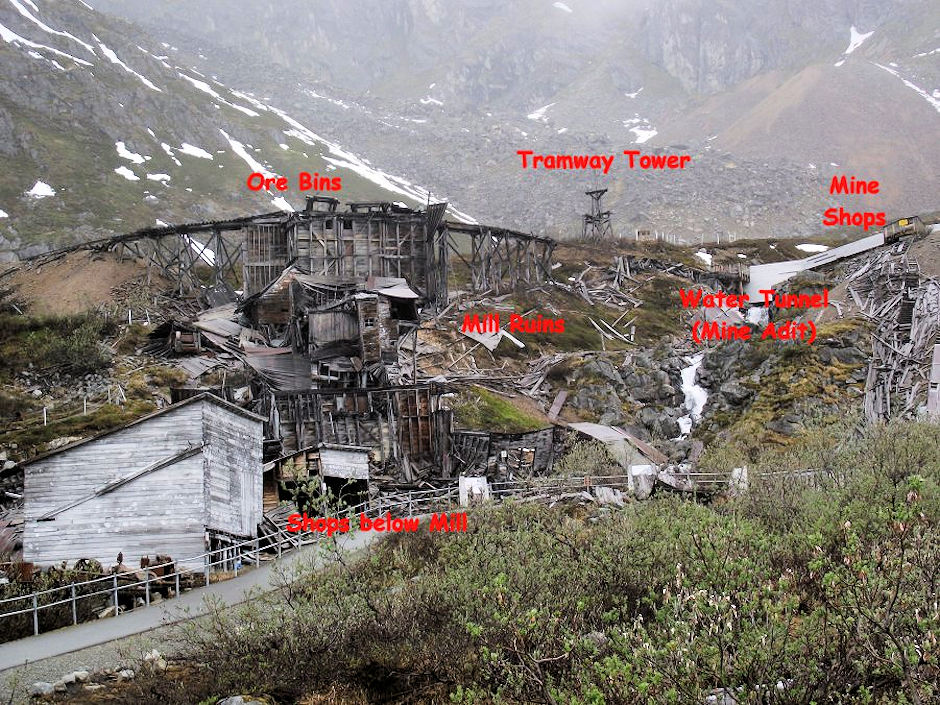
Independence Mine Historical Park, Alaska - 2016
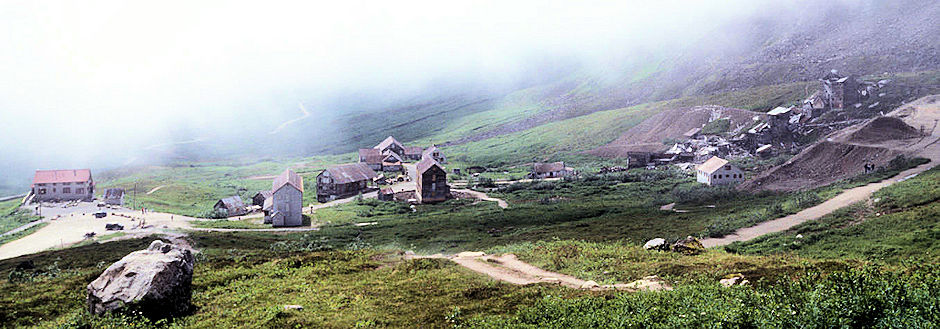
Independence Mine Historical Park, Alaska - 1998
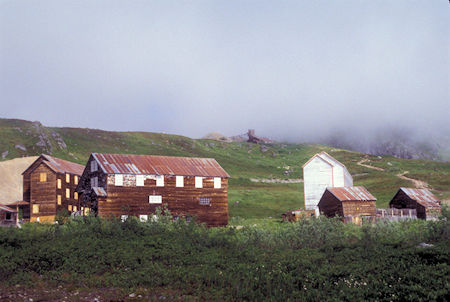
'New' Mess Hall, Independence Mine Historical Park, Alaska
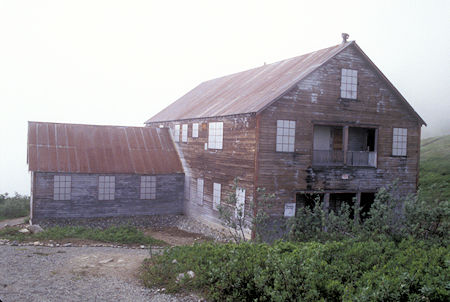
Apartment House, Independence Mine Historical Park, Alaska
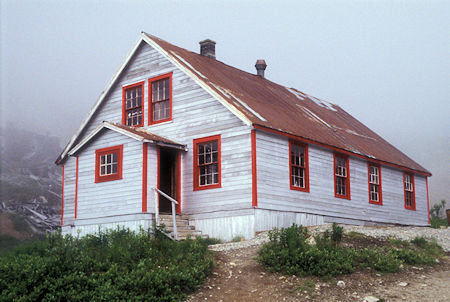
Administrative Office/Commissary, Independence Mine Historical Park, Alaska
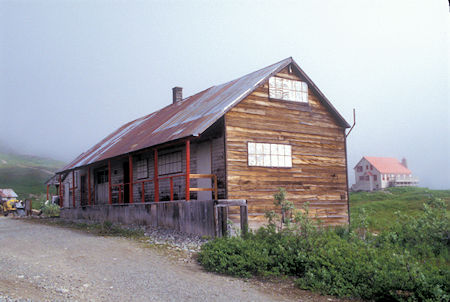
Warehouse, Independence Mine Historical Park, Alaska
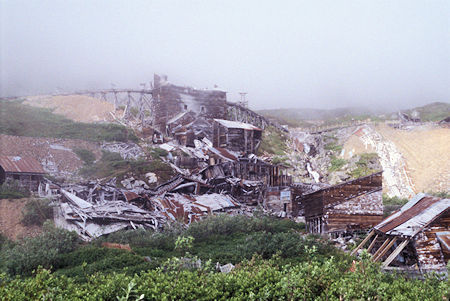
Mill ruins, Independence Mine Historical Park, Alaska
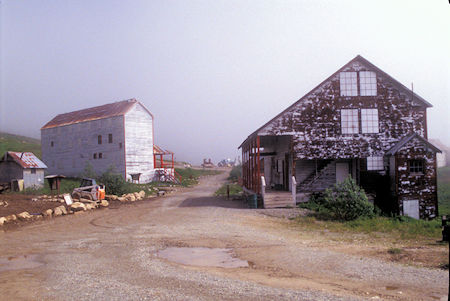
'New' Bunkhouse and Warehouse, Independence Mine Historical Park, Alaska
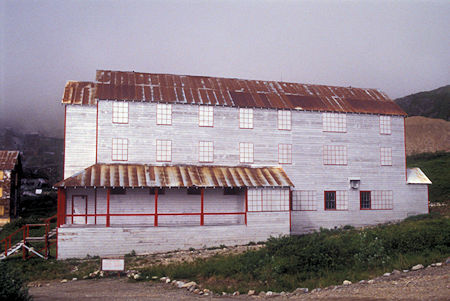
'New' Bunkhouse, Independence Mine Historical Park, Alaska
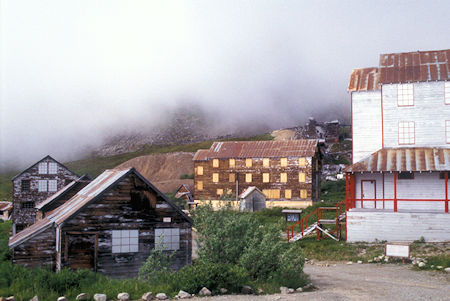
Shop, 'Old' Bunkhouse, 'New' Bunkhouse, Independence Mine Historical Park, Alaska
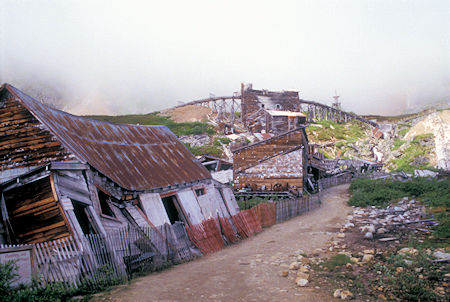
Plumbing and Sheet Metal Shops, Independence Mine Historical Park, Alaska
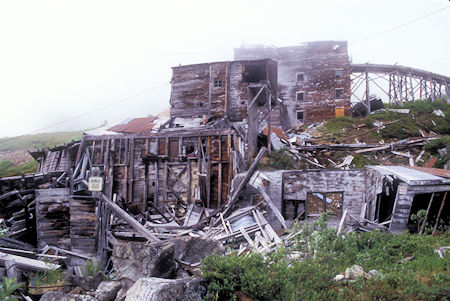
Sorting Mill and Power Plants, Independence Mine Historical Park, Alaska
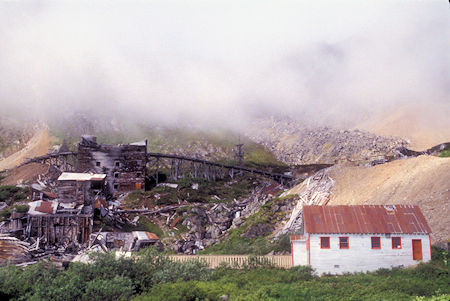
Assay Office on right, Independence Mine Historical Park, Alaska
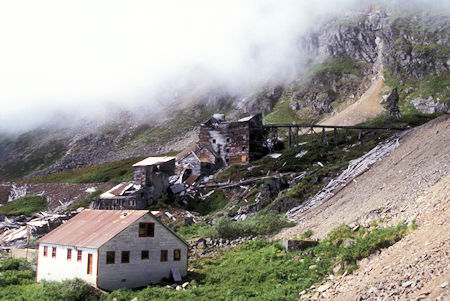
Assay Office on left, mine portal in back, Independence Mine Historical Park, Alaska
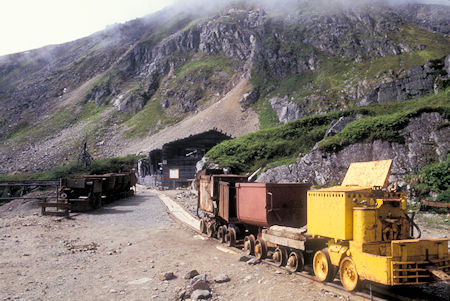
Ore cars, mine shop, Independence Mine Historical Park, Alaska
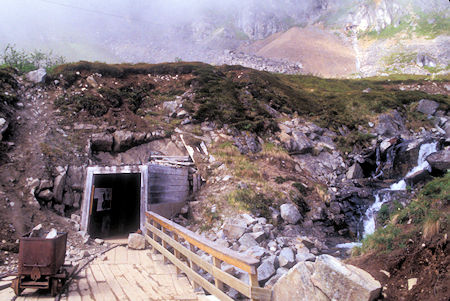
'Water Tunnel' mine portal, Independence Mine Historical Park, Alaska

View from 'Water Tunnel' mine portal, Independence Mine Historical Park, Alaska
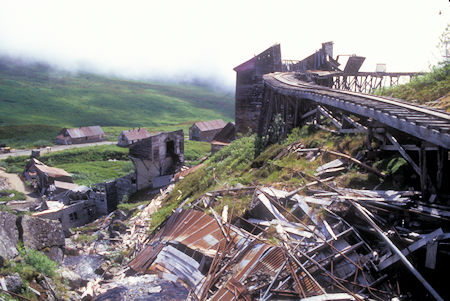
Mill from 'Water Tunnel' mine portal, Independence Mine Historical Park, Alaska
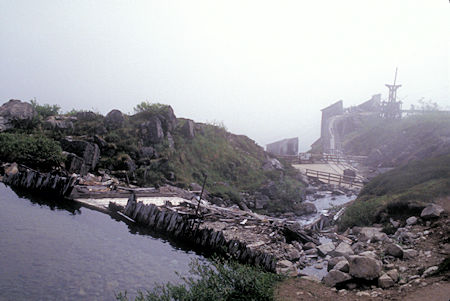
Dam above 'Water Tunnel' mine portal, Independence Mine Historical Park, Alaska
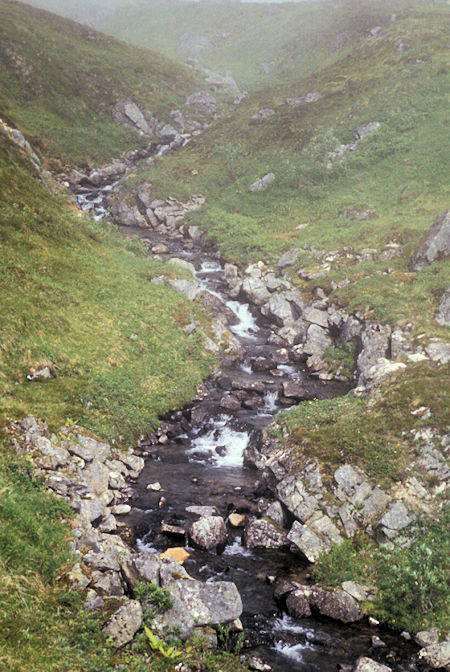
Stream above 'Water Tunnel' mine portal, Independence Mine Historical Park, Alaska
Hiked up the valley a ways behind the mine town - about a 3 mile hike. You can see many of the tailings from mine portals higher on the mountain. Tramways were used to move the ore to the mill.
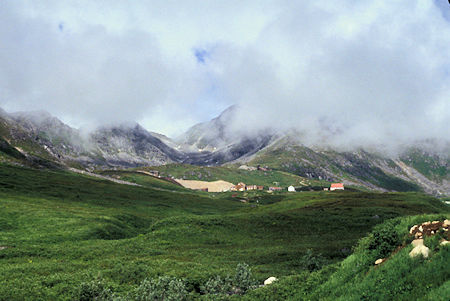
Independence Mine Historical Park, Alaska
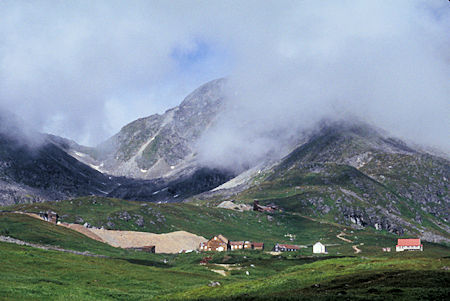
Independence Mine Historical Park, Alaska
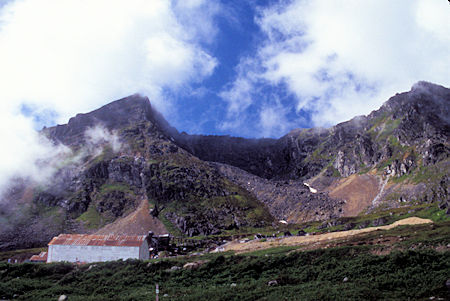
Independence Mine Historical Park, Alaska
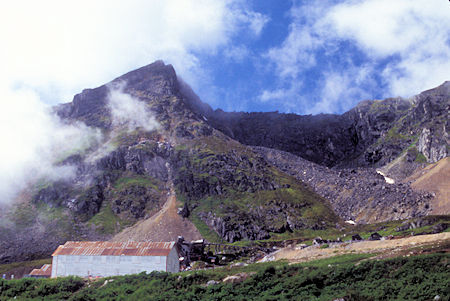
Independence Mine Historical Park, Alaska
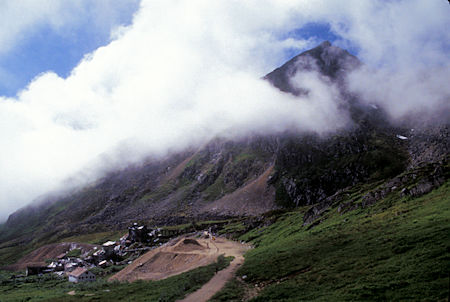
Independence Mine Historical Park, Alaska
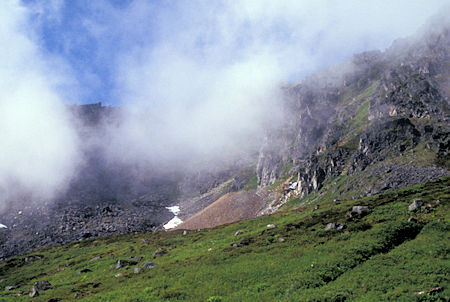
Independence Mine Historical Park, Alaska